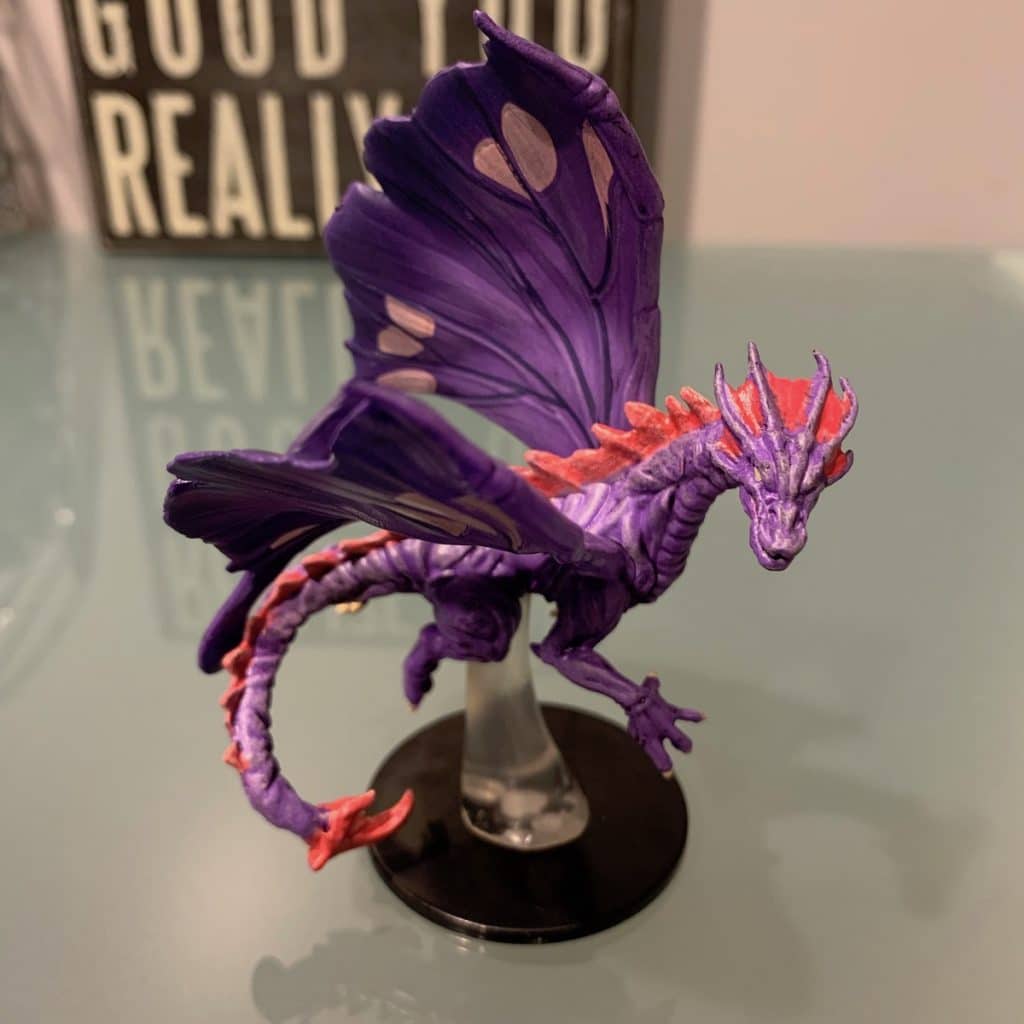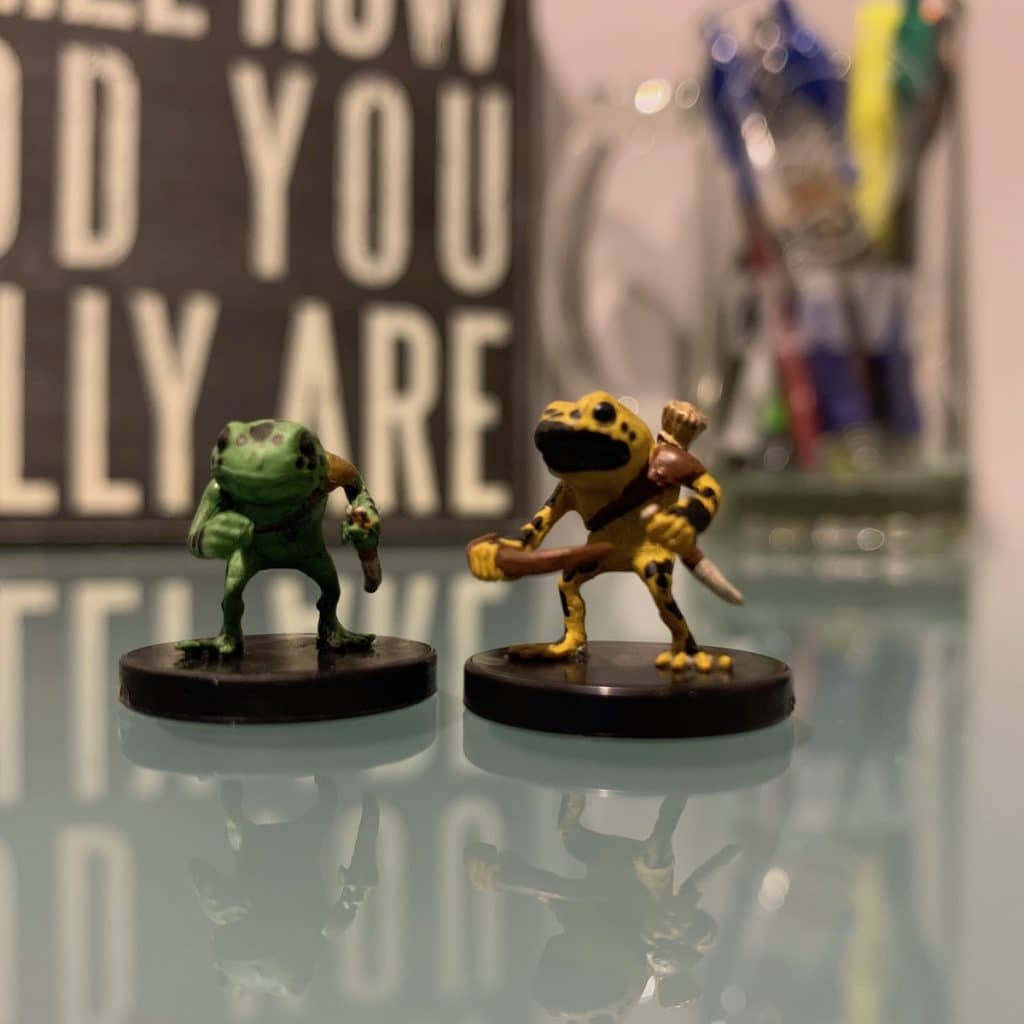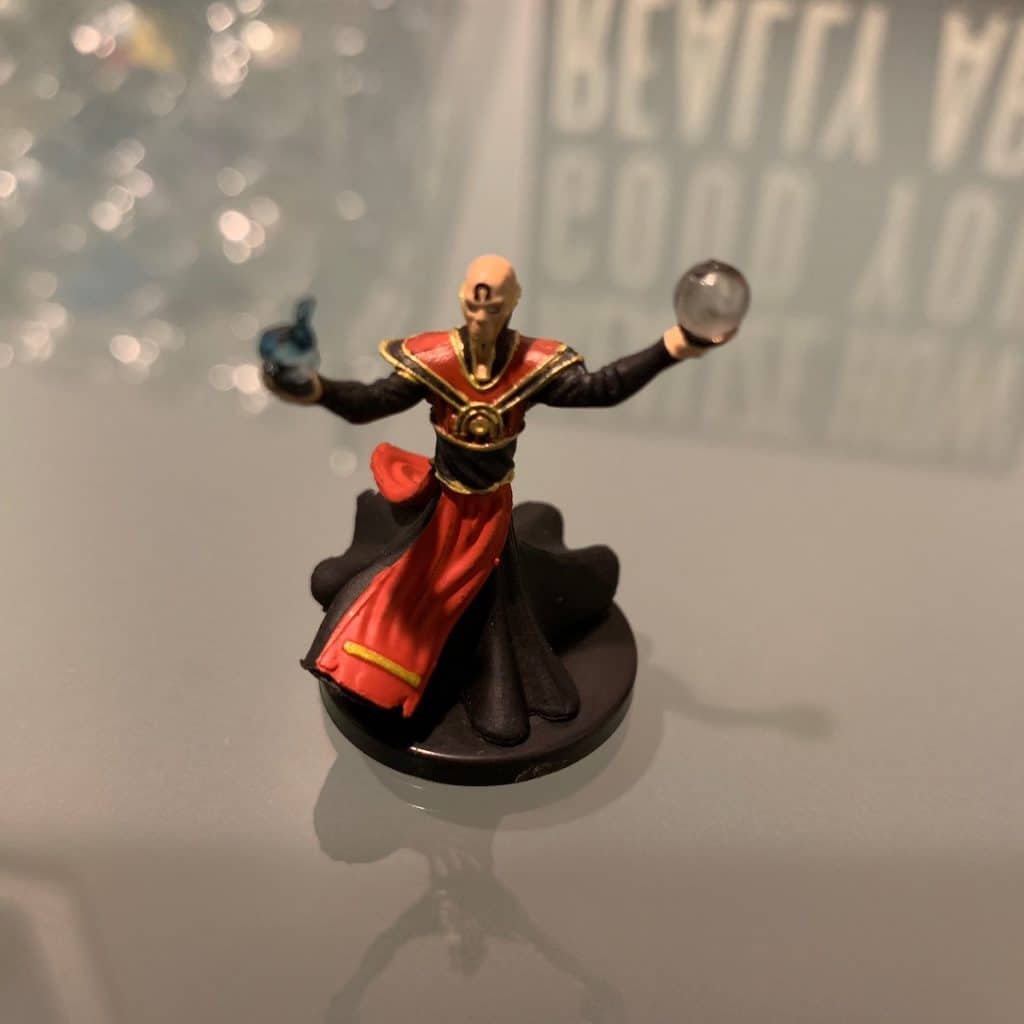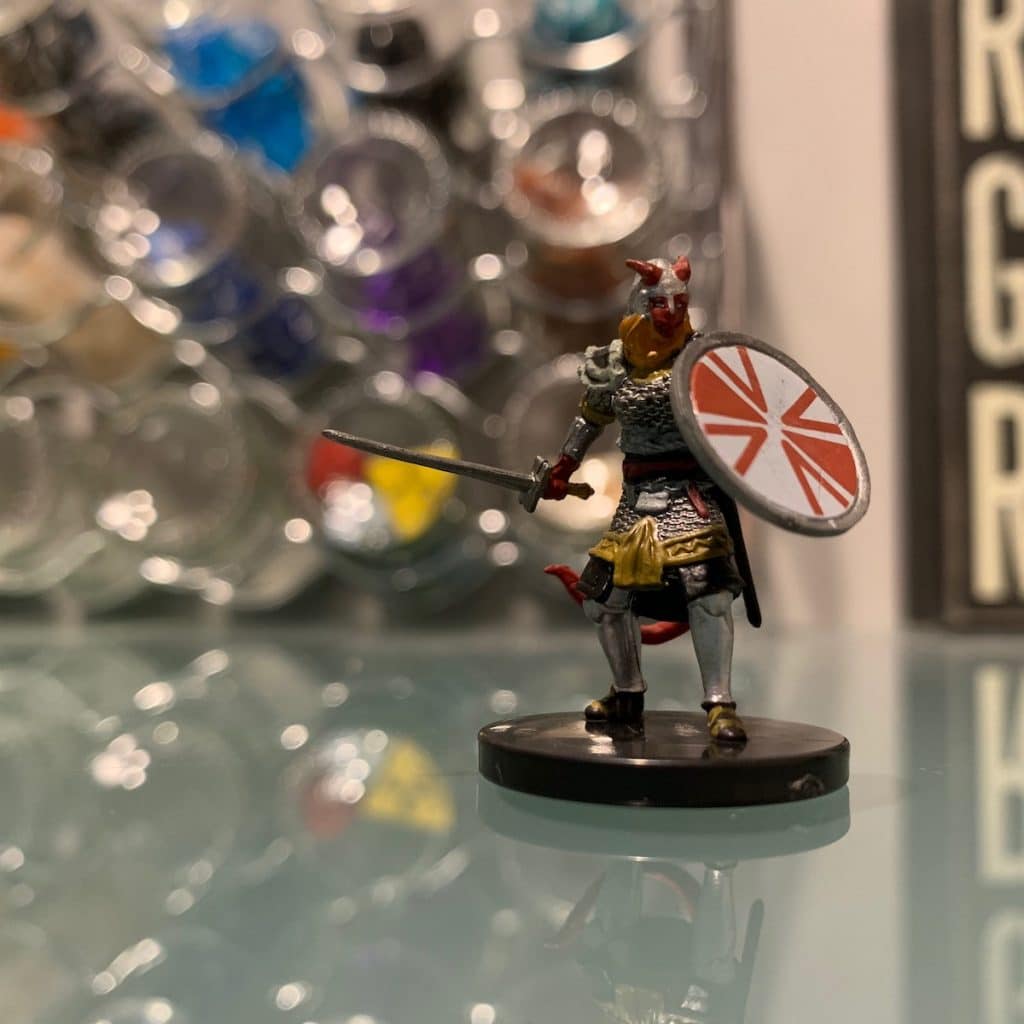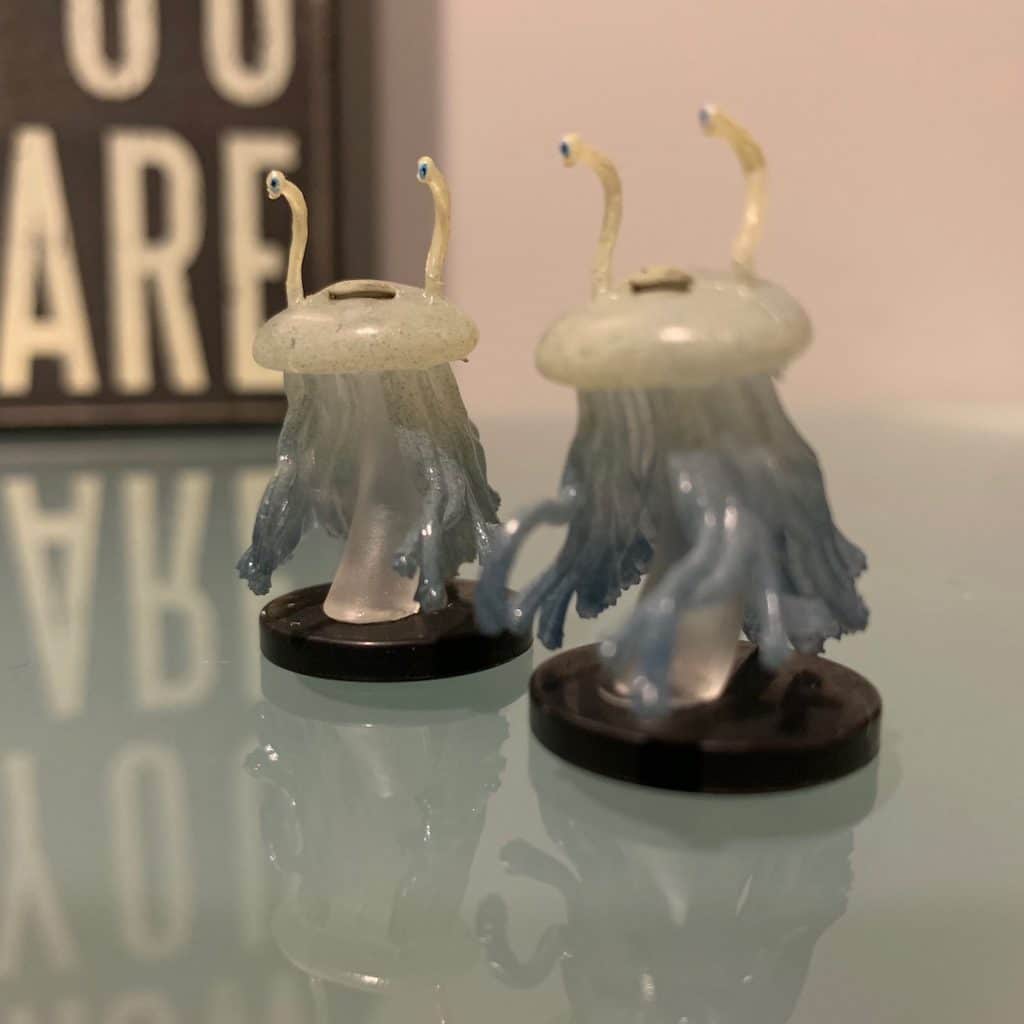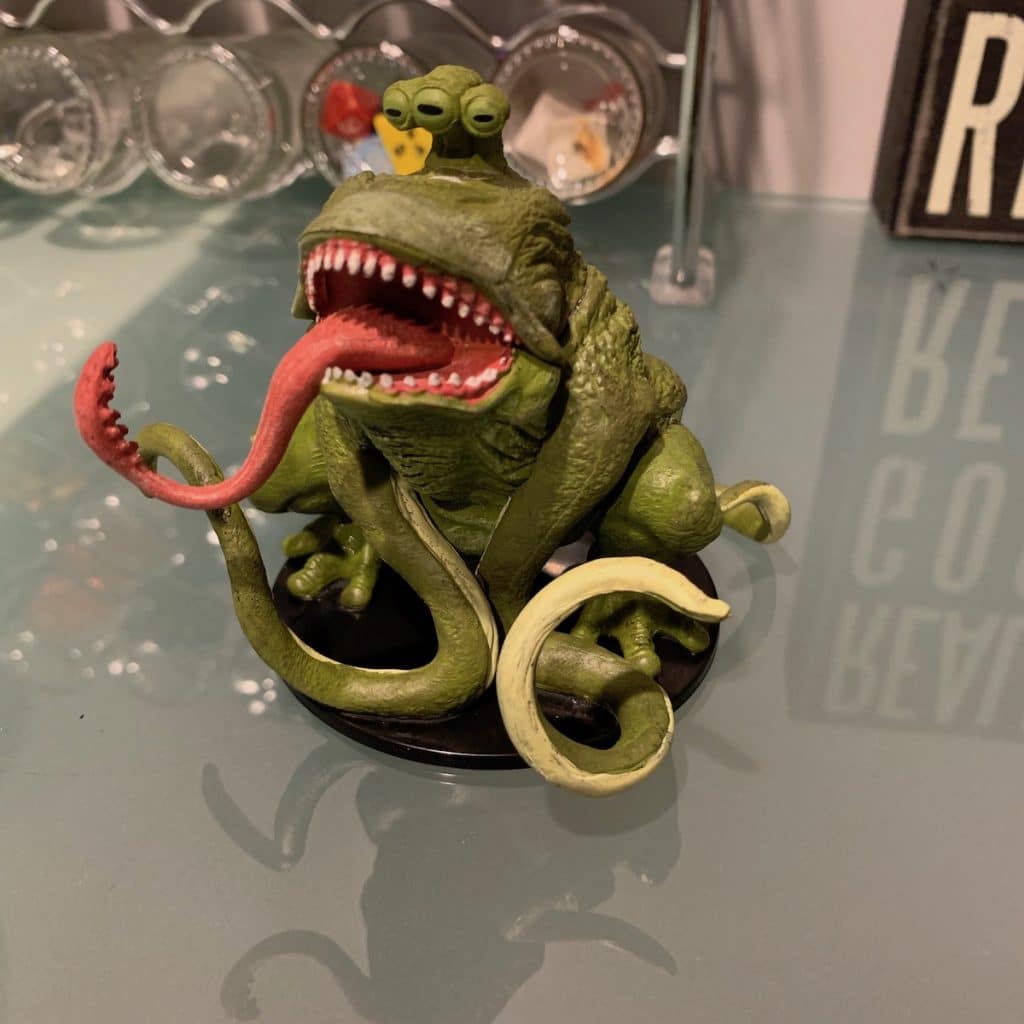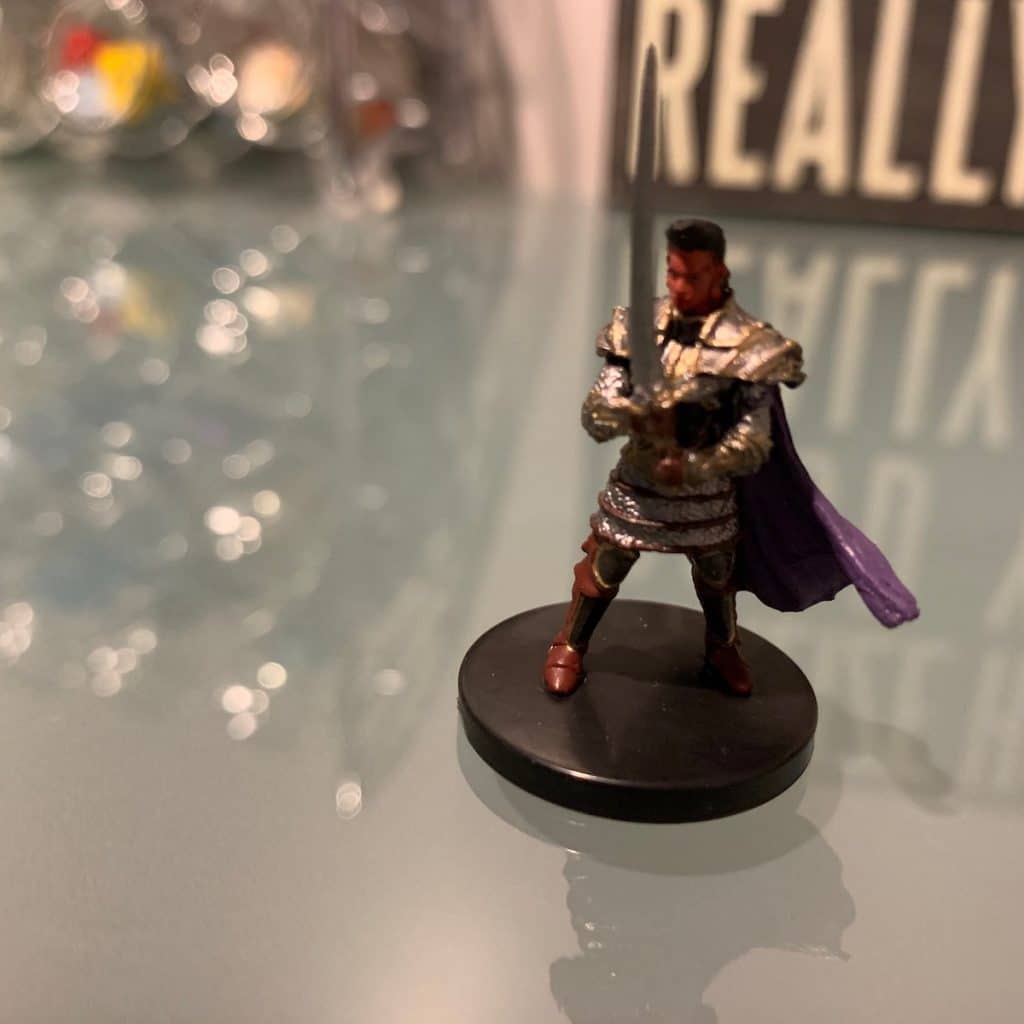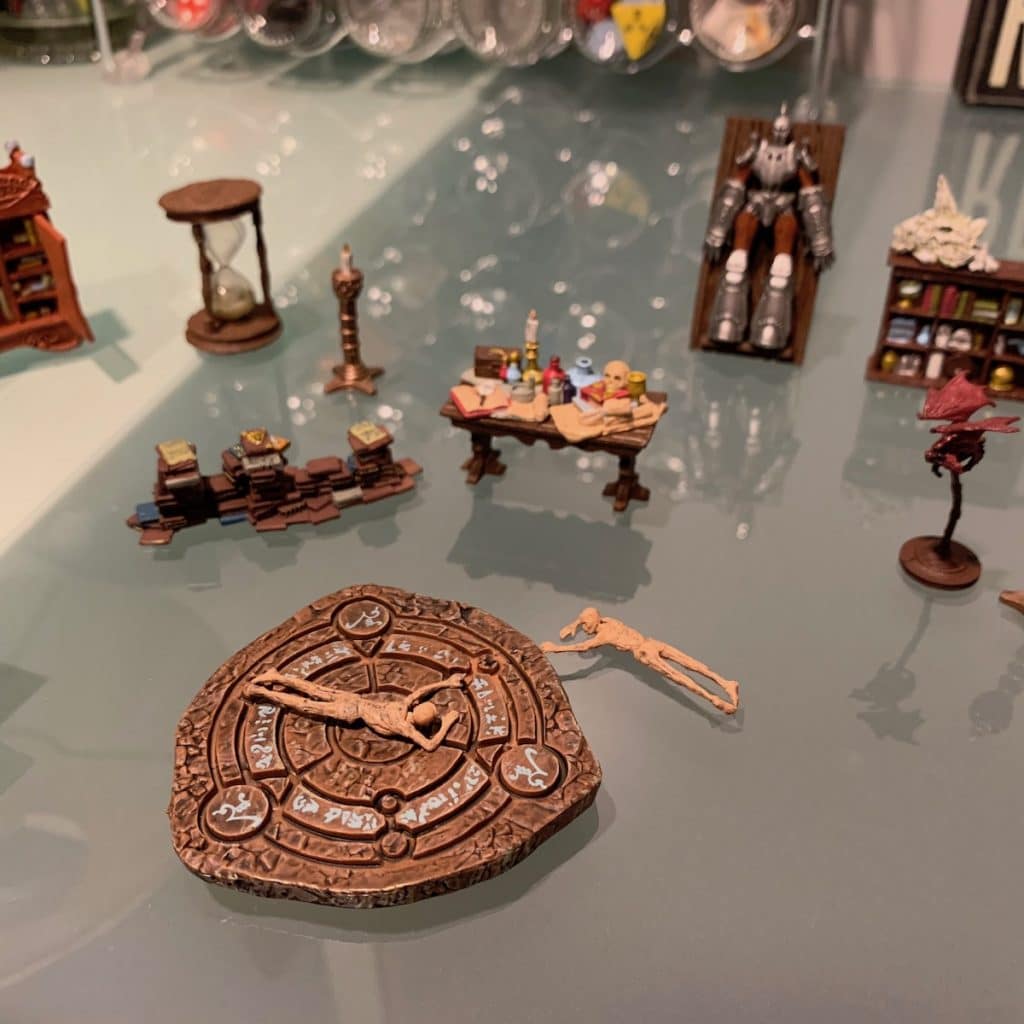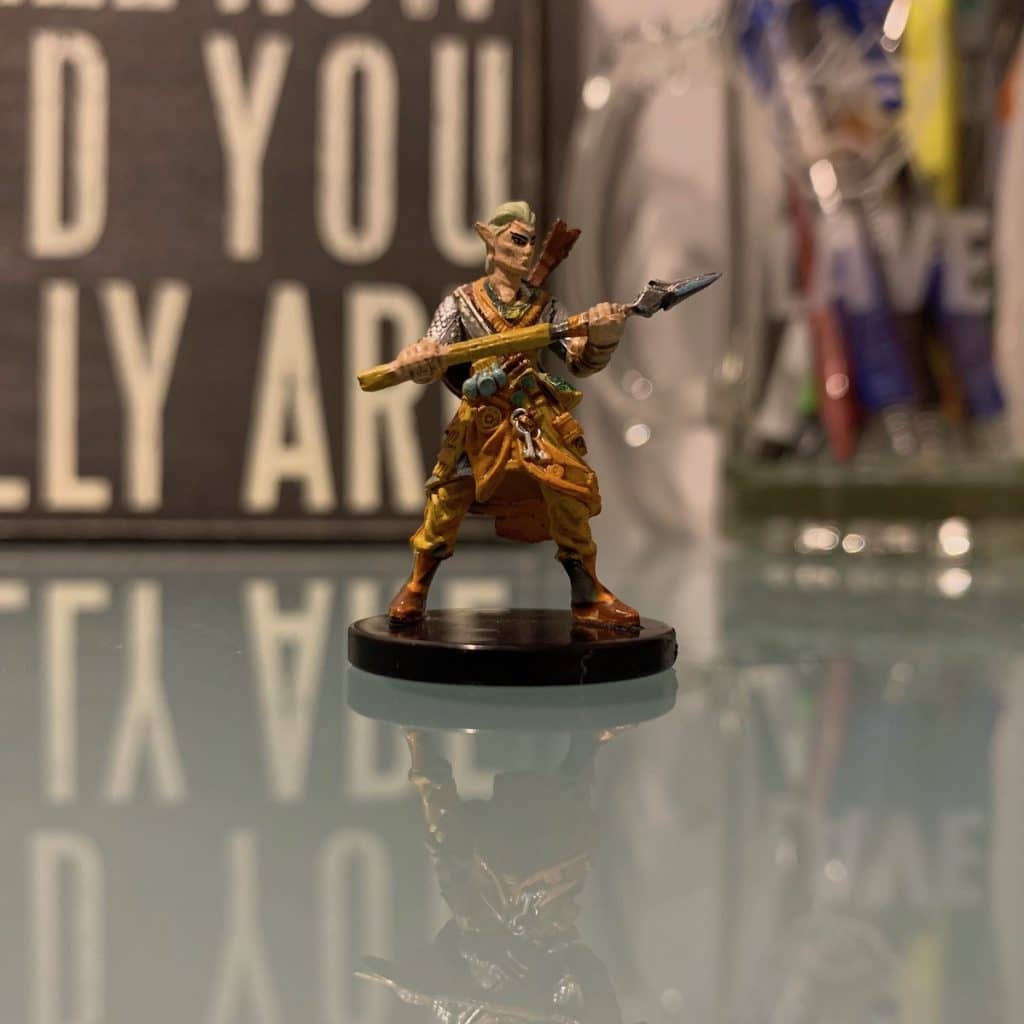I love maker shows like the excellent I Like to Make Stuff. I enjoy the elements of craftsmanship and engineering they highlight.
I also believe we too often take craftsmanship for granted in the products we use and consume. We plop down our $5, then proceed to pick nits and complain, never pausing to appreciate all the processes and people that were involved in bringing that $5 product to market for us.
In particular, I want to devote some words to how miniatures get made.
How D&D Miniatures Get Made
Before we get going, we need to acknowledge how darned cool minis are. Miniatures (and their cousins action figures, etc.) are an iconic part of nerd culture. From old school pewter minis, Micro Machines, or Kenner Boba Fett action figures of yesteryear to Marvel Legends, or Star Wars X-Wing minis of today, us nerds love us some small things to play with (not a euphemism).
And while all miniatures are lovely, we’ll be focusing on how the D&D and Pathfinder prepainted miniatures from Wizkids get made, since those have taking over our present day game shops.
First, is the sculpting. When thinking about how miniatures get made, it’s important to recognize the artistry that goes into turning a two dimensional character mockup into a little 3D thing of beauty. Sculptors are undeniably artisans and craftsmen.
Sculpting was certainly more tactile as it was physically created out of clay or whatever. But today the work is almost always done digitally. After all, it’s easier for a freelance sculptor to email a file than it is to FedEx a figure. (For more on sculpting, check out our interview with miniatures sculptor legend Bobby Jackson.)
Wizkids uses a program called ZBrush to create digital models of all the cool miniatures us Nerds love, like the Pathfinder Battles minis that we use on our grid maps. In that instance, they would work in relationship with the art directors at Paizo (makers of Pathfinder), who give them feedback on if the goblin arm might be a smudge too long or that elf bowman might have ears with not quite the correct point.
That’s a consistent back and forth collaboration, with the art director working with the digital sculptor in order to get the 3D digital render of the 2D art looking perfect in ZBrush.
But the bonus is that the main sculpt looks just right, it can be re-posed in ZBrush to maybe create two orcs, one with a bow and one with a falcion for example. That’s what we see from WizKids in their unpainted two packs. The hard work on that primary digital render can be used for their pre-painted line, then modified slightly for use in their unpainted lines, efficiency in action.
Next, the digital sculpts are then turned into molds. We don’t yet live in a world where it is economically or practically feasible to 3D print thousands of miniatures for mass consumption, although that technology is present for one-off printing in customized services like Hero Forge or Eldritch Foundry.
For the mass market, molds are still needed, which is to say forms that the plastic material the mini is made out of can be poured into. But molds are an expensive upfront cost that is spent before any revenue from sales comes back in. Think about it this way: let’s say the mold is $1,000 while the actual cost of the plastic for the mini is a nickel. You need to mark up that nickel manufacture cost to make back your initial $1,000 mold investment.
The next step is manufacturing. This is pretty basic stuff, namely a factory in China where the cost can be kept down to a nickel and not the quarter that it would take to manufacture elsewhere. You of course have boat time, but it’s not like there are factories in Sheboygan, Wisconsin that have the tooling equipment to craft plastic miniatures anyway. They are busy making bratwurst and cheese.

Let’s not skip over painting. Most of us aren’t the kind of nerds who want to paint our own miniatures, although that hobby is seeing growth. Most Nerds want something ready for game play. So the painting process is where the real magic happens.
But think about what painting involves: These pieces of plastic are only about an inch high, yet have incredibly detailed painting themes. And in many ways, you can think of each of those little minis as “hand painted.” Specifically, the process isn’t fully automated as it doesn’t involve billion dollar robots like those that would machine-build an iPhone. Sure, there is some of that, but it’s also a combination of some clever masking techniques.
It often works like this: A little template covers up the parts you don’t want painted and leaves open the places you want painted. Then some painting elements are old school Henry Ford assembly-lined by humans who sprays a minuscule among of paint to get it crisp with no over-sprays. After they are painted they receive a “wash,” which is a dark inky-like paint that settles into the folds and crevices, giving the figure an appearance of more depth.
It is remarkable that miniatures can get made and then sold to you for about $4.
Now a quick sidebar about the quality, which is due largely to Erik Mona, the Publisher at Paizo. Although there are a variety of minis on the market, the best in class for fantasy gaming is the Pathfinder Battles line by Wizkids. These minis have been coming out since 2012, and Erik Mona (who is a confessed miniatures nerd) has bent over backwards the first few years of that partnership in order to ensure the quality control was of the highest standard.
Each new wave would get incrementally better, like painting around eyes going from a tiny blob of paint to a precise shape with a visible eyebrow. Remarkable.
Plus, income from initial waves allowed technology and equipment investments that have provided huge quality benefits to later lines. Who knows, we may be seeing our minis tooled with the precision of our iPhones before you know it. A nerd can dream!
Then the miniatures come to you. Wizkids has a clever business strategy that allows a full line of miniatures to be produced. Remember when we talked about the $1,000 mold? Well, you’d never get enough nickels back on some obscure D&D monster or character that wouldn’t be purchased individually in high quantities. But if you bundle that with highly popular figures, you can diffuse the cost across the line and make it financially possible.
So Wizkids sells blind boosters of four figures. You don’t know what exact minis you’ll get, other than the likelihood of one of the more popular figures, plus an opportunity of one of the rarer ones. The side benefit is it makes you feel like a kid to open boxes, trying and get the figure you want.
So that’s how miniatures get made. Hopefully this brings an appreciation both of the craftsmanship as well as the manufacturing logistics involved. But more than that, I hope this encourages you to go to your local FLGS and buy a couple minis. They really are cool.


